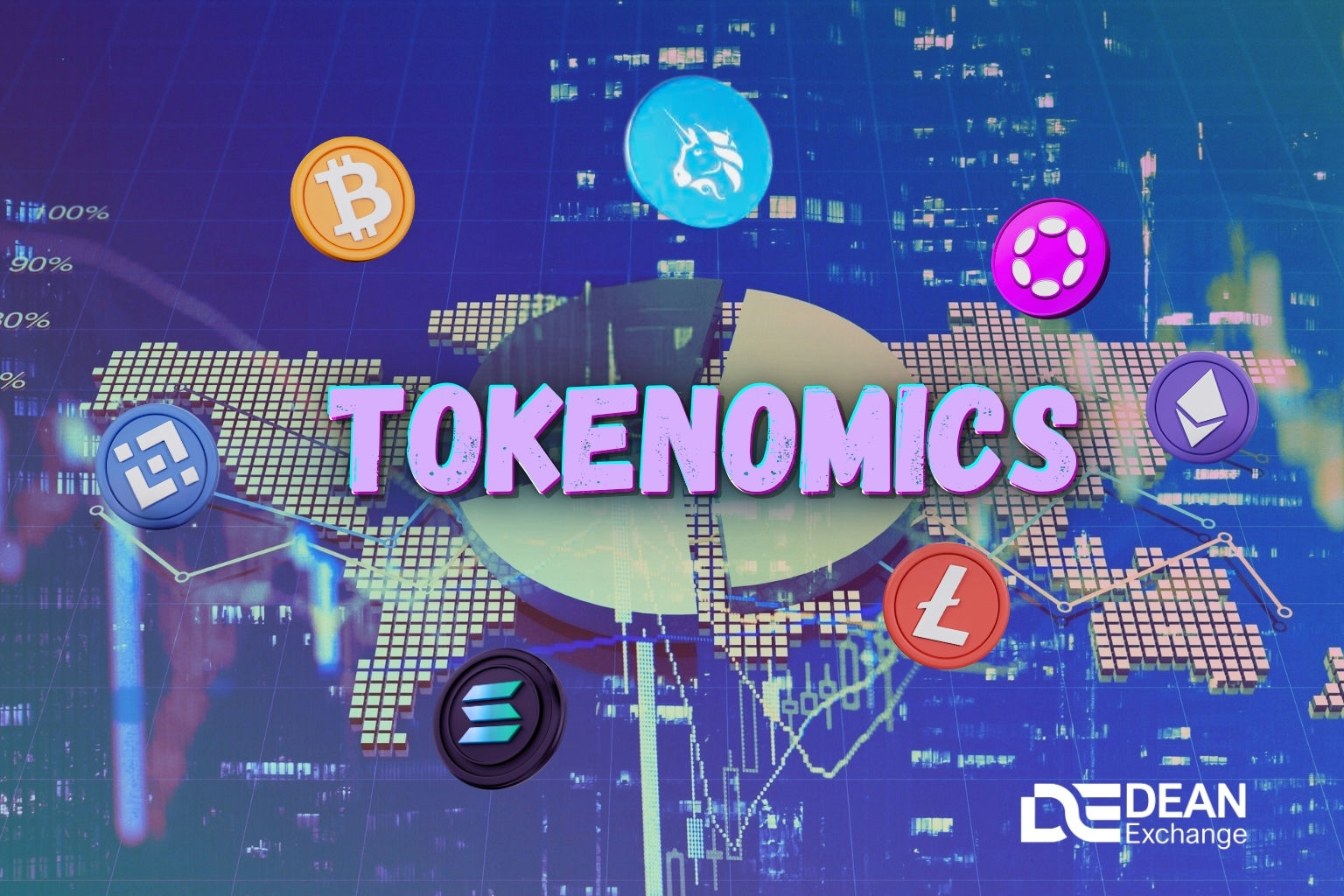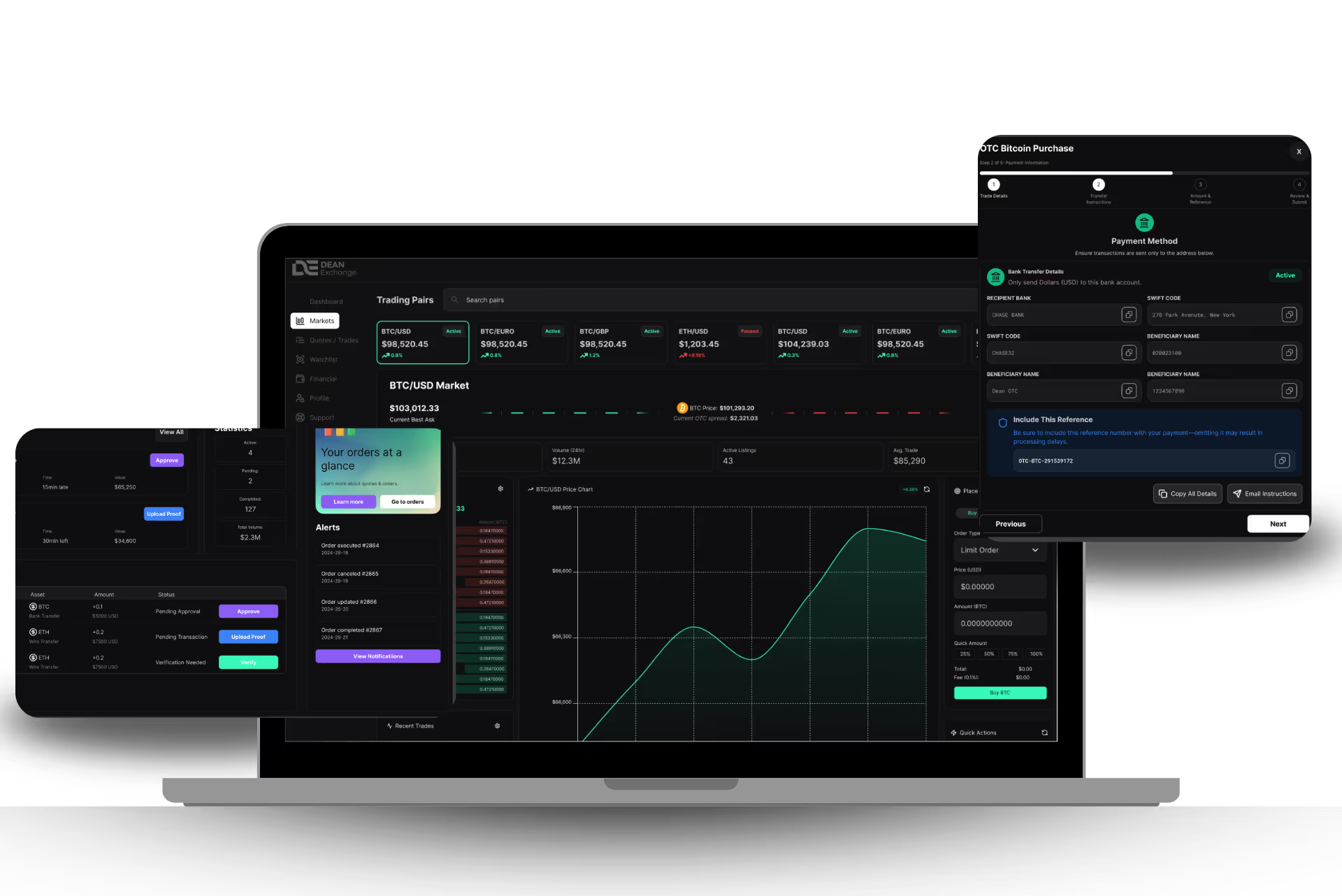By the
This is some text inside of a div block.
This is some text inside of a div block.
•
5
min read

The success of a cryptocurrency often hinges on more than just code and hype. At the core of every digital asset is a critical concept: tokenomics. Understanding tokenomics is essential for anyone looking to invest, build, or trade in the crypto space. It’s the framework that governs how tokens are created, distributed, and used—and it can determine the long-term sustainability of a project.
At Dean Exchange, we believe that clarity is the first step to confidence. In this guide, we’ll break down what tokenomics is, how it works, and why it should be one of the first things you research before engaging with any cryptocurrency.
Tokenomics is a combination of “token” and “economics.” It refers to the rules and design mechanisms that influence a token’s supply, demand, utility, and value within its ecosystem. Just as traditional economies rely on monetary policies, cryptocurrency projects use tokenomics to establish how their token functions and thrives over time.
Well-designed tokenomics helps create trust, incentivize user participation, and attract long-term investors. Poorly designed tokenomics, on the other hand, can lead to inflation, unsustainable reward structures, and eventual collapse.
One of the most foundational elements of tokenomics is total supply. Some cryptocurrencies have a fixed supply, like Bitcoin, which caps its total issuance at 21 million coins. This scarcity can make the asset more attractive as a long-term store of value.
Other tokens adopt inflationary models. Ethereum, for instance, initially had no supply cap. However, after implementing EIP-1559 and moving to Proof-of-Stake, Ethereum’s supply became deflationary under certain network conditions—showing how blockchain technology evolves tokenomics in real time.
Understanding whether a project’s token supply is capped, gradually increasing, or dynamically adjusted helps you anticipate potential changes in value.
Who gets tokens—and when—is another critical question. Token allocation often includes:
A project with overly concentrated token distribution might face sell-off risks. A well-balanced structure ensures that incentives are aligned and encourages broader participation on a cryptocurrency exchange or in decentralized protocols.
Tokens should have real-world or platform-specific use cases. These may include:
Token utility directly influences demand, especially across altcoin exchange markets. A token with a clear and necessary role within its ecosystem will likely see stronger long-term adoption.
Bitcoin’s fixed supply and predictable halving schedule have created a deflationary asset that’s often referred to as “digital gold.” Its tokenomics rely on scarcity and decreasing miner rewards to gradually reduce new coin issuance—a model that has proven resilient over time.
UNI is used to govern the Uniswap protocol. Token holders can vote on key decisions, such as fee structures and feature upgrades. Its tokenomics are designed to reward early users and empower the community, aligning incentives across the decentralized exchange ecosystem.
Axie Infinity uses a dual-token model—AXS for governance and SLP for rewards. During the 2021 bull run, millions joined the platform to earn SLP, but an oversupply led to a value crash. This example highlights the importance of balancing reward incentives with demand and burn mechanisms.
With thousands of tokens listed on the best crypto exchanges, it’s easy to get swept up in short-term hype. But experienced traders and analysts know that a strong tokenomics model often separates short-lived projects from sustainable ones.
Reviewing a project’s whitepaper or cryptocurrency tutorials can reveal:
The more transparent and balanced the tokenomics, the more likely the project can weather cryptocurrency trends and market volatility.
Token release schedules, lock-up periods, and vesting cliffs all influence price action. A major unlock of founder tokens can flood the market, causing short-term dips. On the flip side, burning tokens or reducing supply (as with Ethereum post-EIP-1559) can lead to upward price pressure.
This is where crypto market analysis intersects with tokenomics. Understanding a token's economic foundation helps you better predict how its price may behave—not just based on sentiment but on structural mechanics.
When evaluating a cryptocurrency project, consider the following tokenomics indicators:
Platforms like Dean Exchange often include these insights in their research reports and cryptocurrency tutorials, making it easier for users to assess whether a project’s tokenomics are built for sustainability or short-term speculation.
At Dean Exchange, we go beyond surface-level speculation. Our mission is to provide accessible, research-backed crypto education that empowers every user—beginner or advanced—to make informed decisions. Whether you're looking to understand the economics behind a promising new altcoin, or you're exploring the next big cryptocurrency exchange listing, our platform offers:
Tokenomics isn't just a niche topic—it’s the foundation of smart investing in the blockchain era. By mastering the fundamentals, you gain an edge in identifying not just the next big project, but the next sustainable one.


Join our newsletter for exclusive insights, breaking crypto trends, and learning opportunities—delivered straight to your inbox.